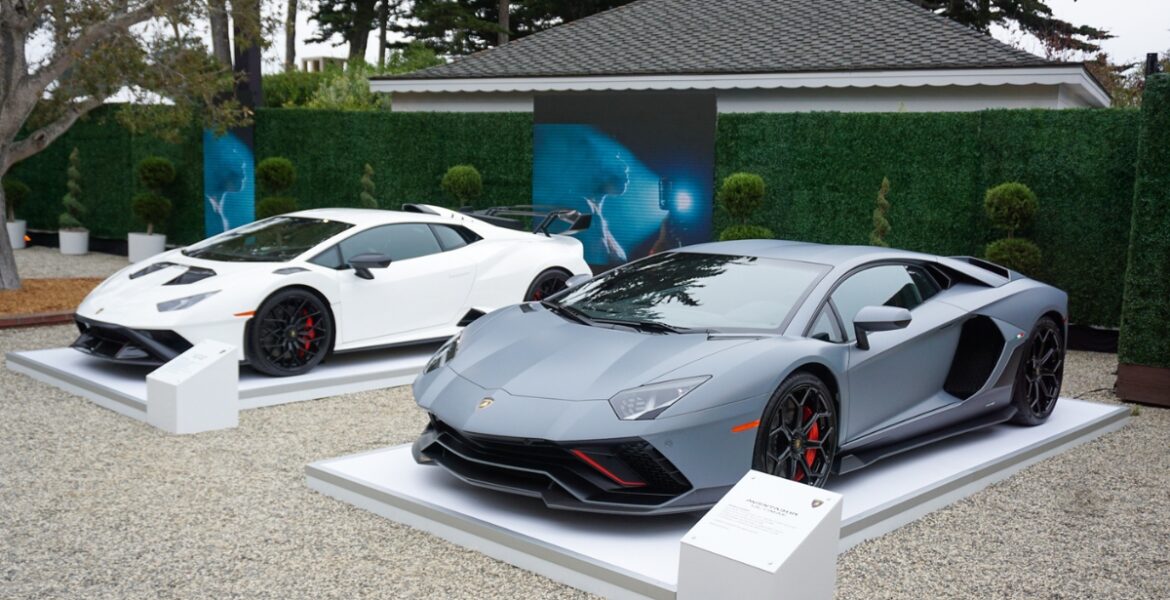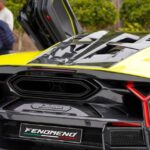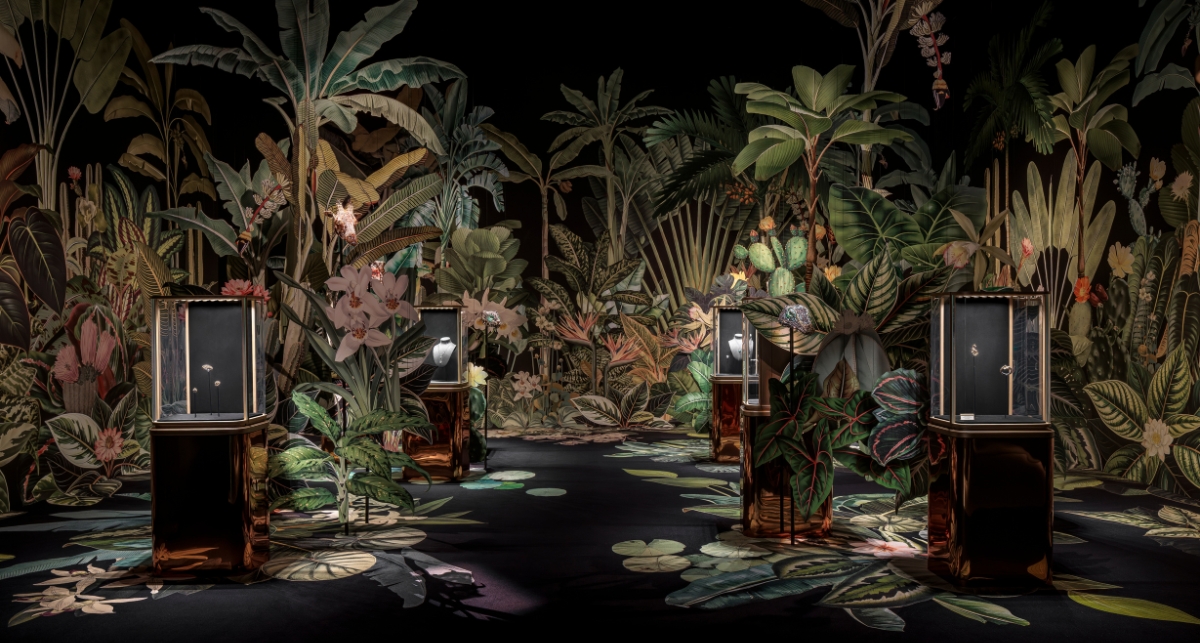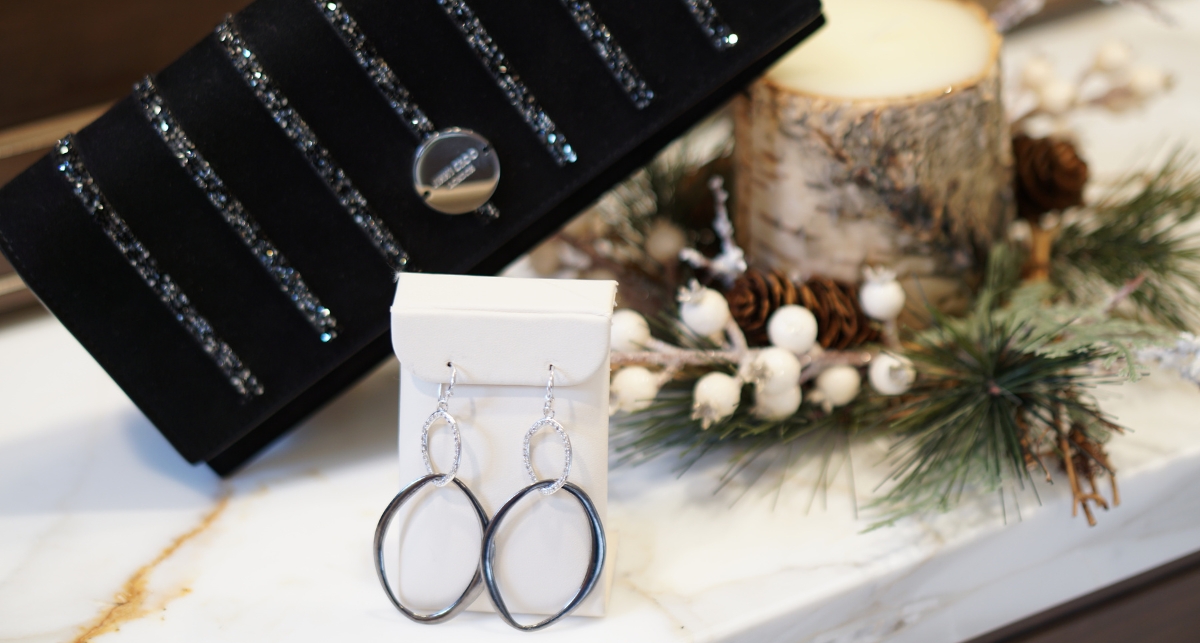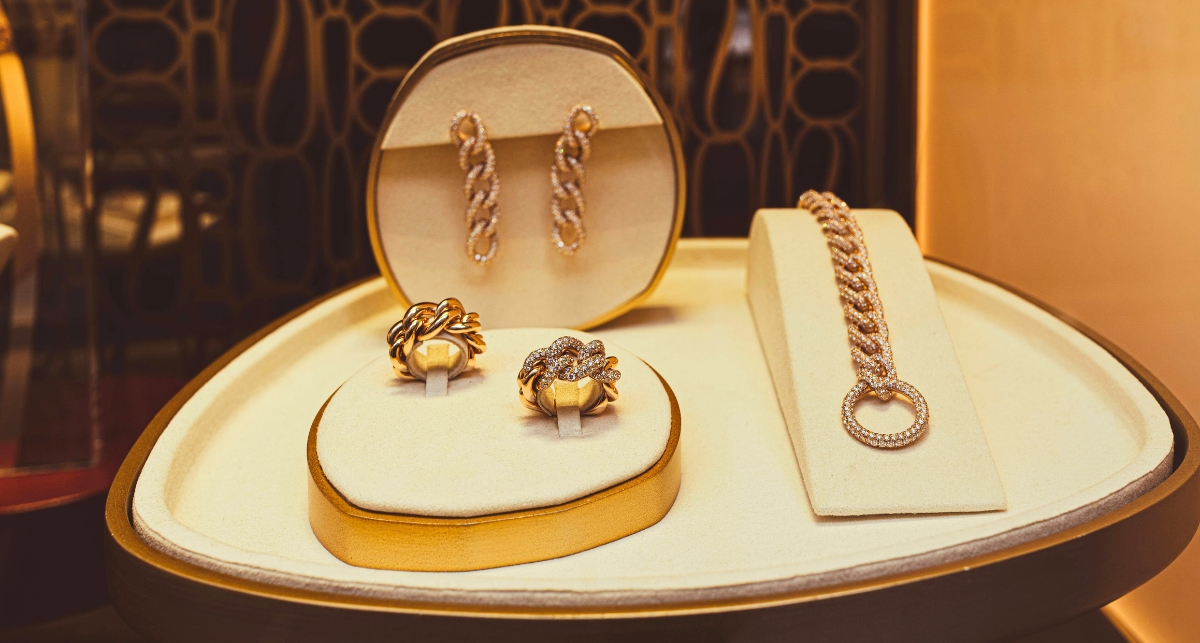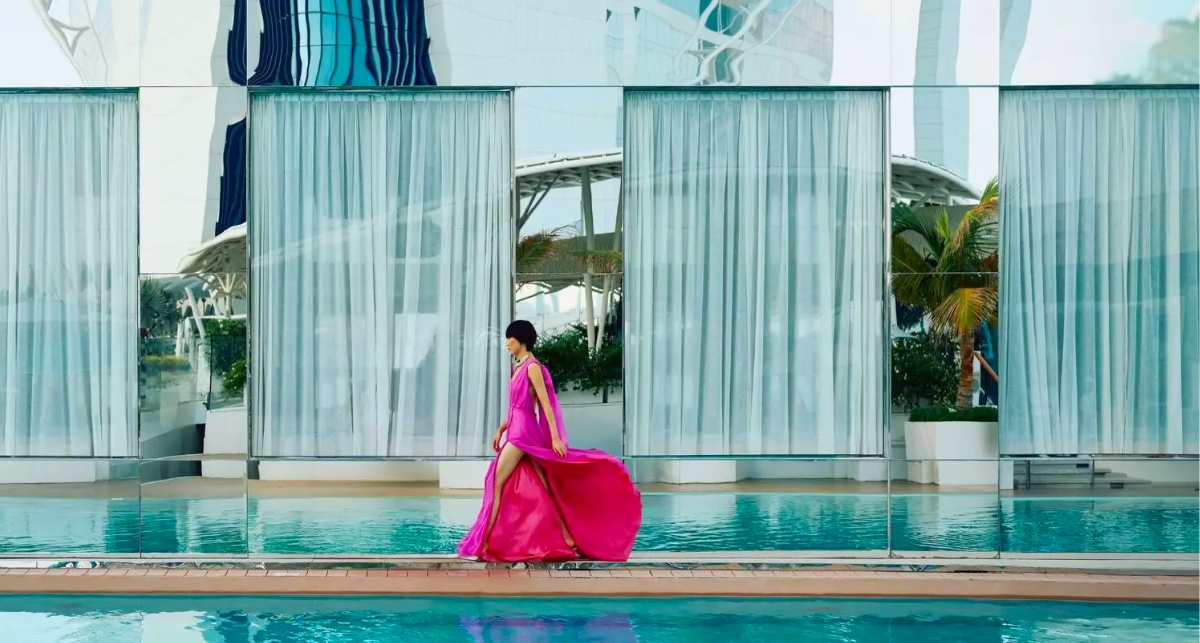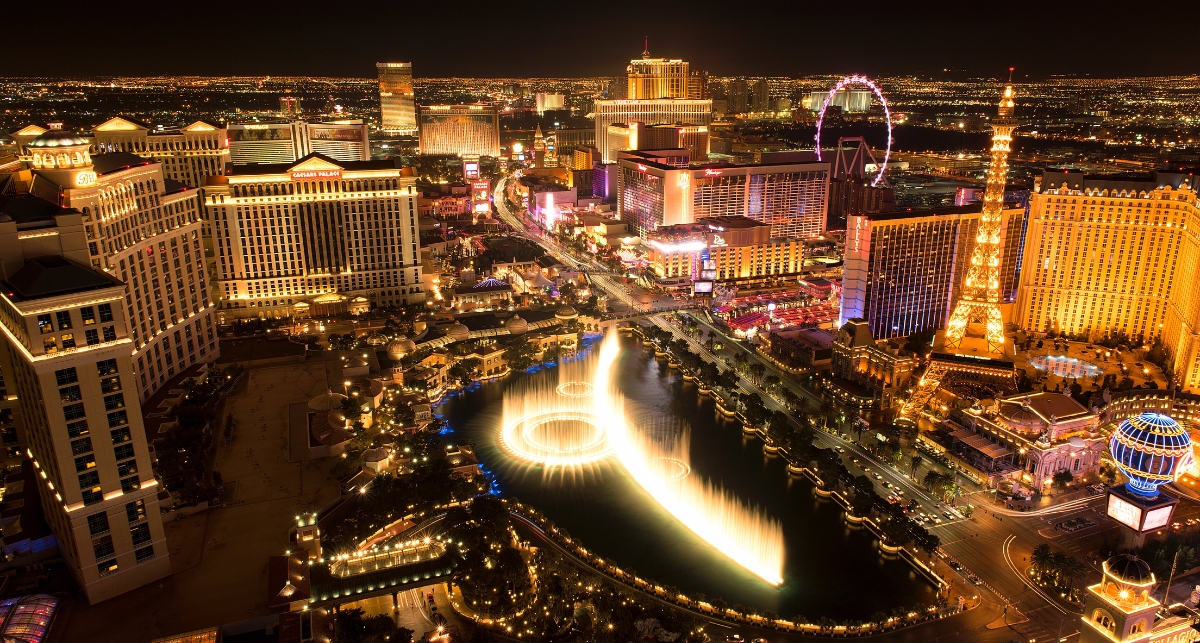Set behind the guarded gates of Pebble Beach, California, lies one of many picturesque European-style mega-estates with sweeping views of the famed golf course and the Pacific Ocean in the background. While these private homes are ultra-exclusive (and you rarely see people even living in them), during Monterey Car Week, this palatial setting was radically transformed into the uber-cool and modern House of Lamborghini.
On a brisk, foggy afternoon during last year’s Car Week, I was invited to meet with Mitja Borkert, the current Head of Design of Automobili Lamborghini, at this swanky home-away-from-home for the designer, his team, and the Lamborghini collectors who were in town for the week.
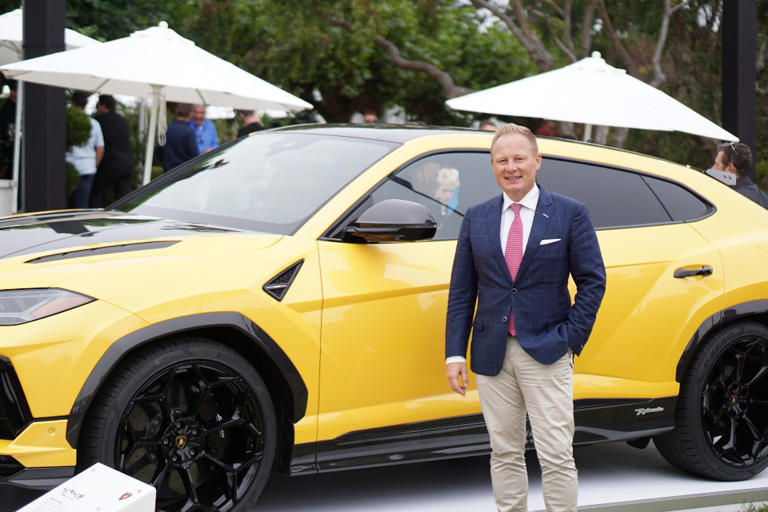
As a long-time Lamborghini aficionado (who’s dreamed of zipping around Laguna Seca racetrack in it since I was a teen), I’ve always admired their eye-catching, head-turning silhouettes, vibrant and playful colors, and dynamic energy.
While I appreciate a number of luxury car brands (and have owned them myself), Lamborghini is uniquely different than most automobiles. It’s truly a one-of-a-kind type of brand that raises the bar when it comes to self-expression.
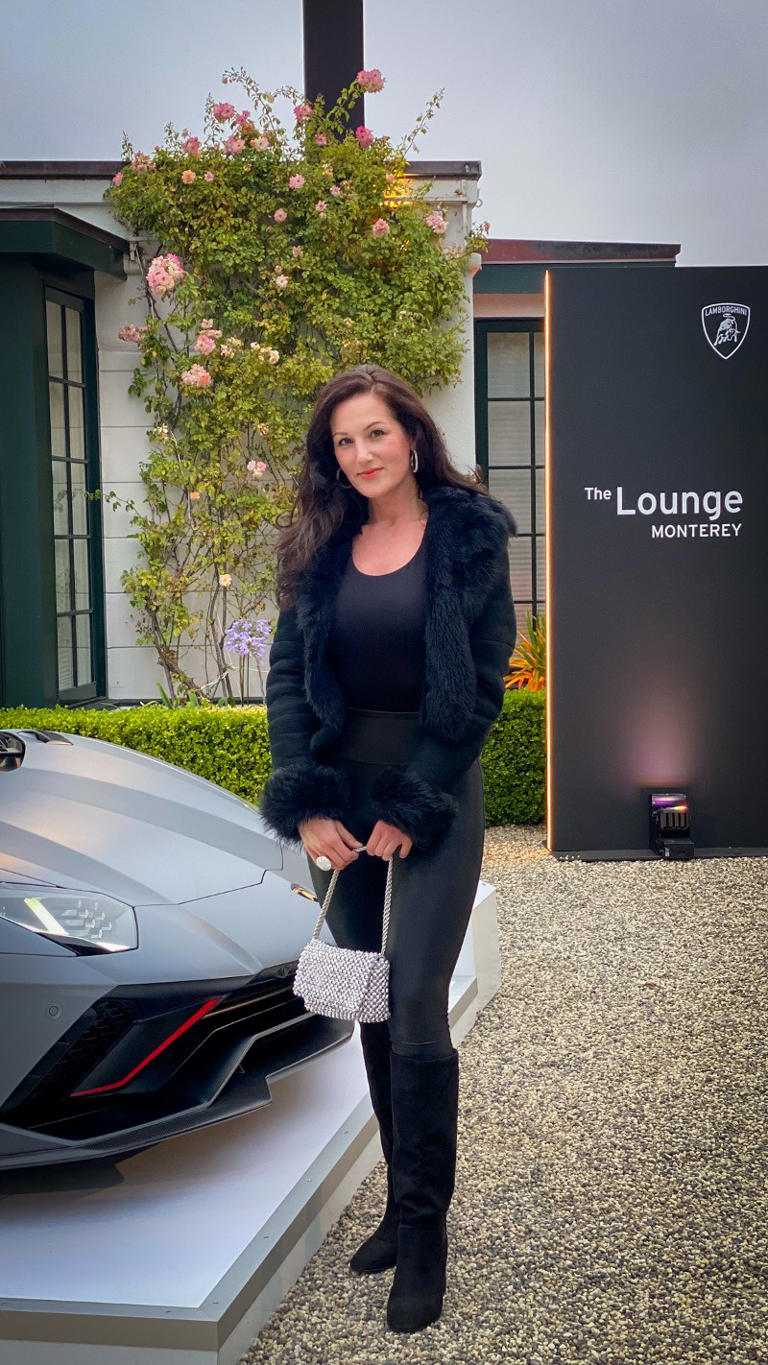
So, naturally, getting the opportunity to sit down with Mitja was an inspiring moment for me because I love learning how illustrious designers think. In addition to chatting with Mitja about his background, his design ethos, and the brand in general, I also got to learn about the powerful Lamborghini Urus SUV, and why he playfully refers to it as a “Go-Kart Dad’s car”.
So, without further adieu, here’s a peek into our inspiring conversation.
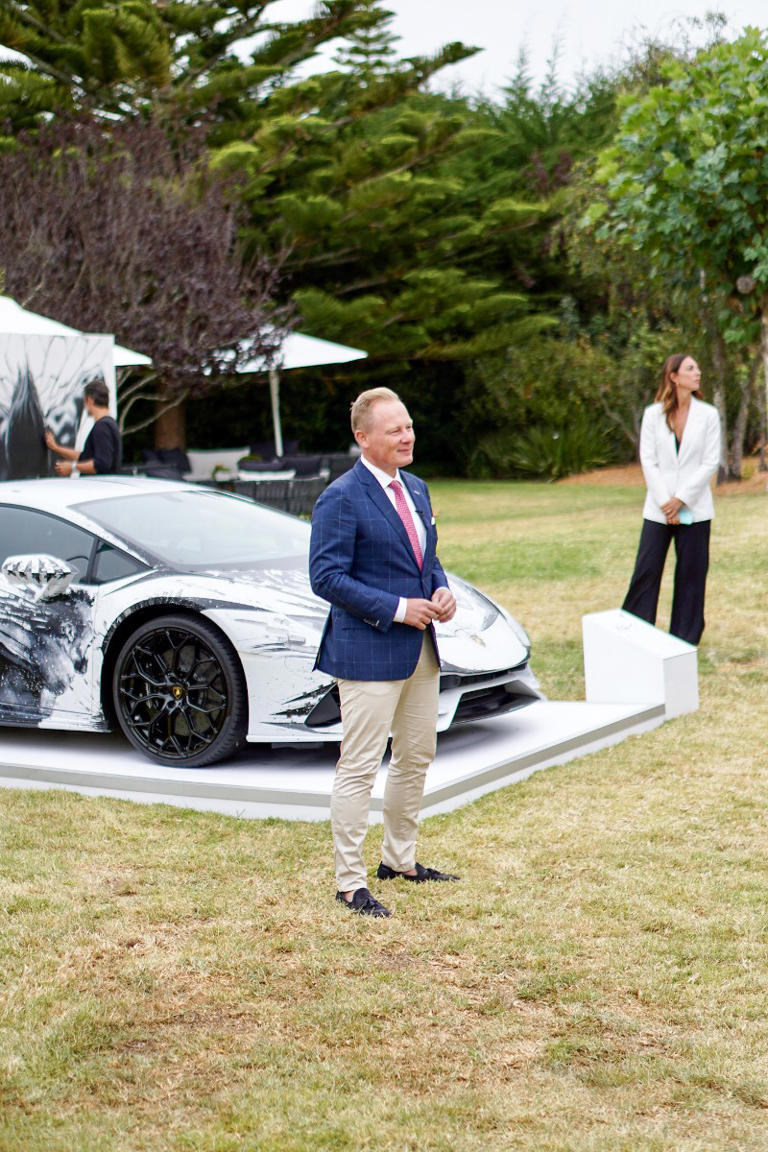
CLP: “We’re going to play 20 questions because I like games. So the first one I want to ask is: “Why do you love Lamborghini?“
MB: “I love it. I’m born in east Germany, in the communist part of Germany, which is a country that doesn’t exist anymore. So I had never seen a Lamborghini until 1990. And then I thought ‘Wow. Yeah. They were my favorite cars growing up.'”
CLP: “What inspired you to become a car designer?”
MB: “I was always sketching motorcycles and cars. And, we could only secretly watch Western television in 1984. So I painted a Formula One car but was not allowed to see the actual racer, but we were watching the Monte Carlo race, I guess. Otherwise, I couldn’t see it.
I had the opportunity to study car design, so I continued sketching. I took my sketches, went into the garage of my father, and pushed his car away, to start shaping the design with clay. I wanted to see what my sketches looked like in a three-dimensional shape.
I was driven to do this. And, when I arrived at the design school and I entered the place, and I remember like, yesterday, the smell of the clay, and I said to myself, ‘This is my world. This is what I want to do.'”
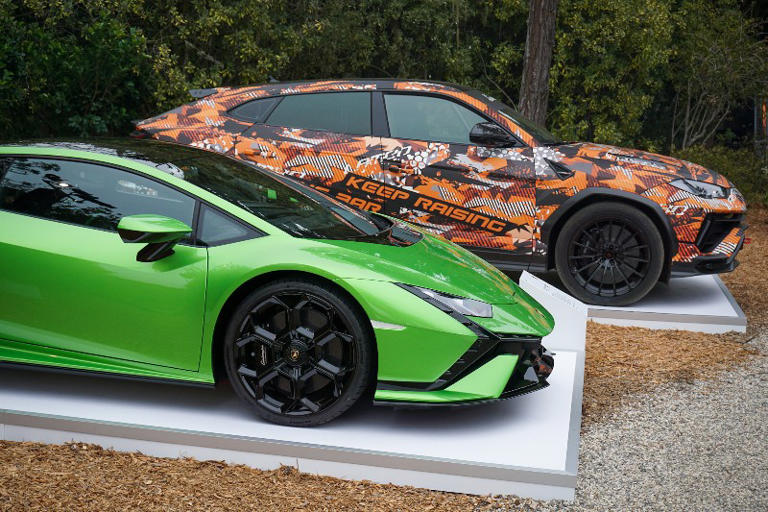
CLP: “So is that how you design now, as you start with the sketch, and then you go into a kind of 3D modeling that way, or do you use computers?”
MB: “Of course, in Lamborghini, we use a lot of computers, especially our young designers, but, everything starts with the sketch. Sometimes when I’m relaxed in the shower in the morning, or when I go running, an idea is born. A lot of cars are born in those moments.”
CLP: “So how would you describe the brand in three words?”
MB: “Brave, authentic, and unexpected. And, for me, inspiring for sure.”
CLP: “Where did the name Urus come from and what does it mean?”
MB: “Urus is the starting point of the bull. The very first version of the bull was.”
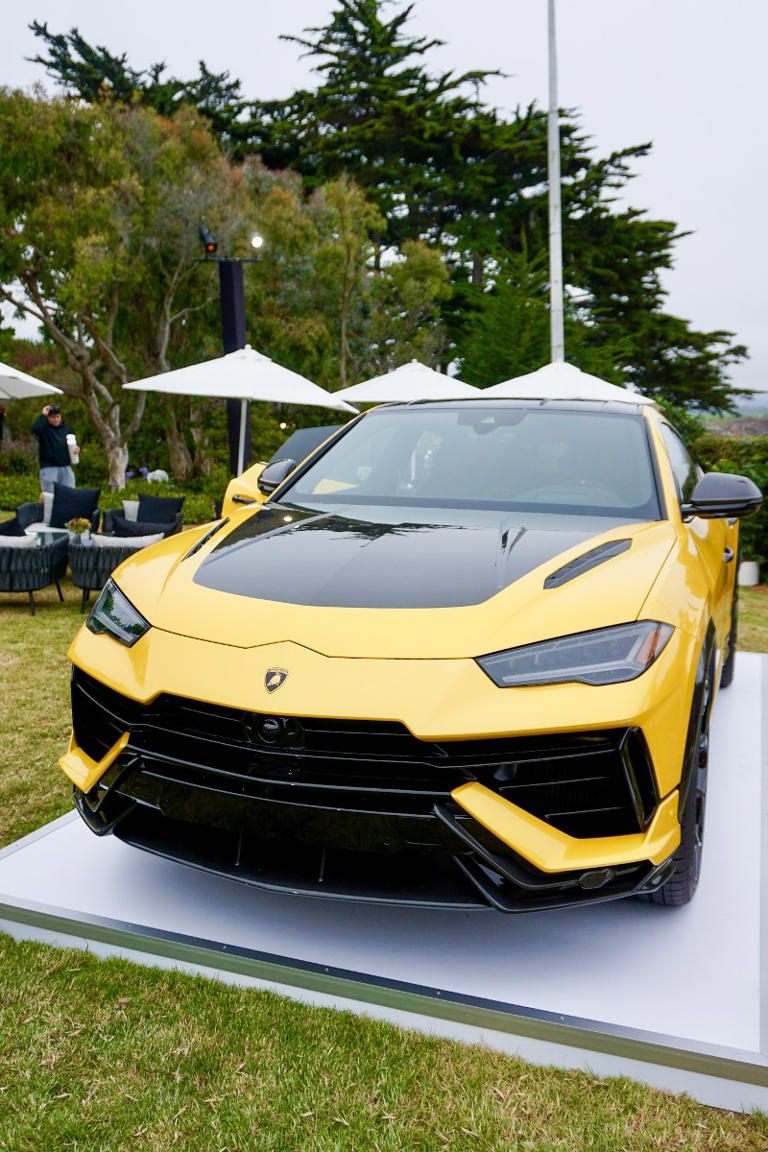
CLP: “Why do you think an auto enthusiast or car collector would choose to buy a Lamborghini over another type of car? They have so many options, but what I’m coming to realize is that when people buy a car, they seem to develop a loyalist attitude. And so it’s like, they become part of a culture. So why would someone choose Lamborghini?”
MB: “We have a lot of iconic cars. We are becoming now so popular among car collectors because they find with us – both the originality and design. People are attracted to Lamborghini because the world is becoming more and more common, just more of the same. So people want to have something that shows character and stands out.”
The older cars, they are getting even more precious now because more and more people, more and more collectors step into the field. They were dreaming about touching the past, but now they want to buy it. So it’s driving also, automatically the market, the prices, and so on – it’s skyrocketing. So it’s, uh, um, and then also we will be, we came from a single cop rent into a brand with two cars. We are so exclusive, but people find their inspiration here.”
CLP: “Well, there seems to be a lot of self-expression with it. Do people usually get custom paint jobs? Are they doing wraps on the cars? Because it seems like every time I see a Lamborghini, usually it’s unique and different, or there’s a design or bold coloration on it.”
MB: “We offer more than 400 different colors.”
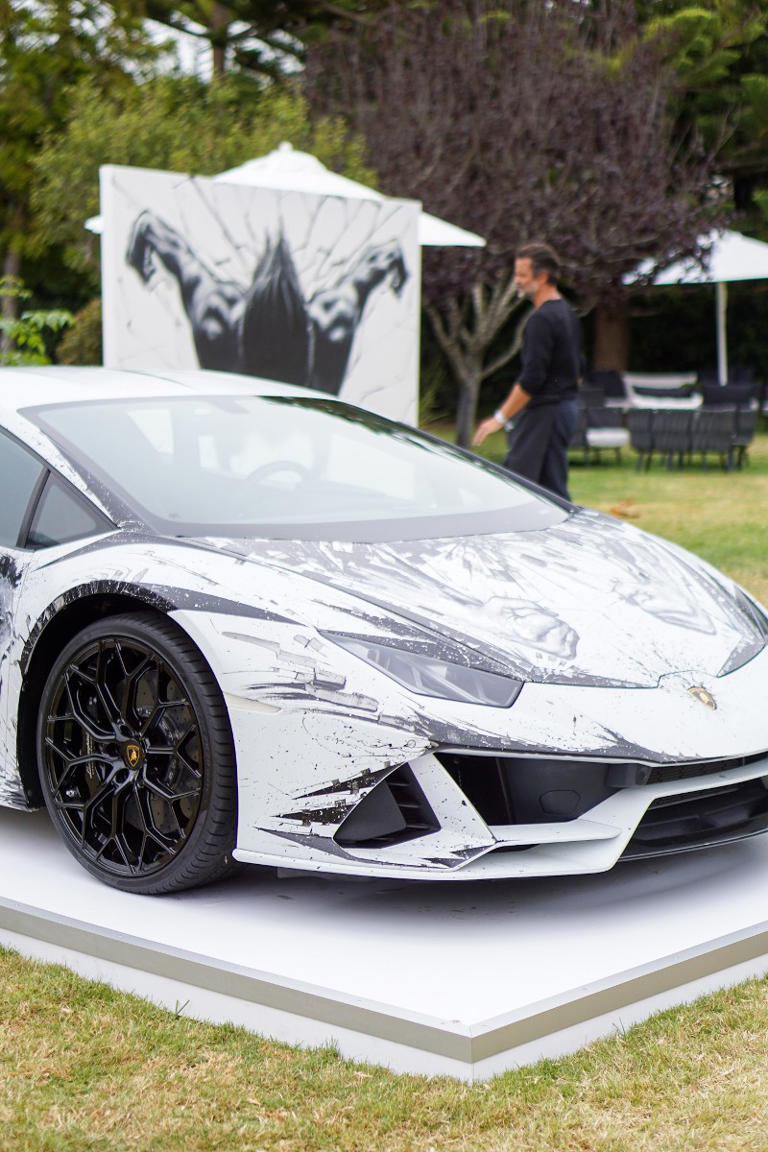
CLP: “When designing a car, do you have some form of inspirational muse, whether it’s architecture, artwork, fashion, or something else that sparks your creative vision?”
MB: “At the end of the day, everyday life is inspiring to me. I like motorcycles and MotoGP. If you look at our technical features, you will always find exposed rear tires and a lot of things that are inspired by motorcycles.
And then, of course, myself, but all the designers in my team take a lot of inspiration from airplanes. So this week, I visited the USS Midway. And, you know, when I see the colors, the shapes, the wings, and stuff like this, it’s a sort of inspiration.”
And I’m inspired by music.
I would explain it like this, with a Lamborghini, we want it to be unexpected. Unexpected means we have one DNA. The rhythm of the presentations has to play in a certain way, and as a designer, of course, I can influence this product portfolio. So it has to play a nice rhythm. So in terms of an artist that has been around for a long time (like a Madonna), the artists that are surviving for a long period, stay true to who they are and are consistent but yet are always doing something unexpected.”
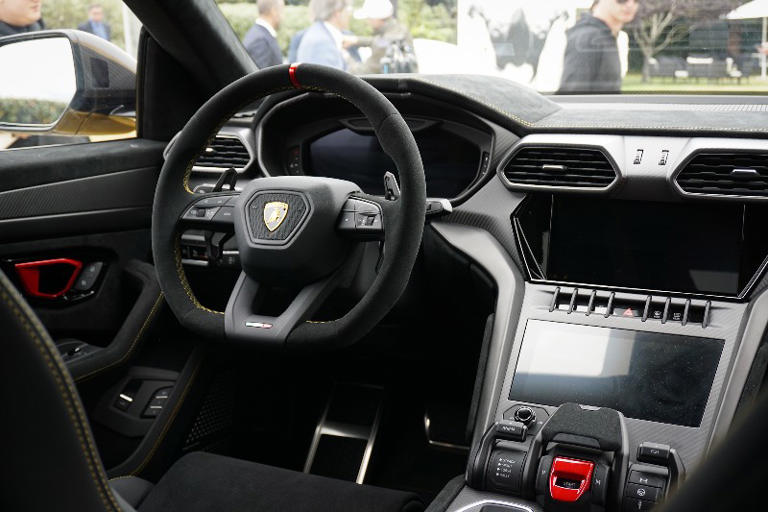
CLP: “Since form meets function, what engineering and production constraints do you have to think about when designing a car? I was learning, when talking to a few other designers this week that, you have to basically keep the same production techniques or processes, as well as the same machinery. Bottom line – you don’t develop new machinery every time you come out with a new design. Is that correct?”
MB: “It tends to be – form follows performance. But, we are for sure, not the ergonomic world champions. But it doesn’t mean that our cars are not working. Of course, they are.”
I think, we should push more, as designers. Let’s say at least we are pushing in terms of 3D printing at Lamborghini. For example, for the gasoline color cap, we developed, it because 3D printing is living this mauvey effect of the layers. And, if you touch manually the three different things, then it becomes too expensive. If you design something, using the aesthetic of those layers, then, it’s coming off the printer and you can use it.
And so you need to have a different form of creativity. So for example, we were using graphics and hexagon shapes. We would say, ‘Hey, why do you need seats with a lot of plastic formats?’ So we could shift this industry by developing it differently. With the experience of a designer, you need to understand if your shape is possible and which material to use – aluminum, carbon fiber, plastic, etc.”
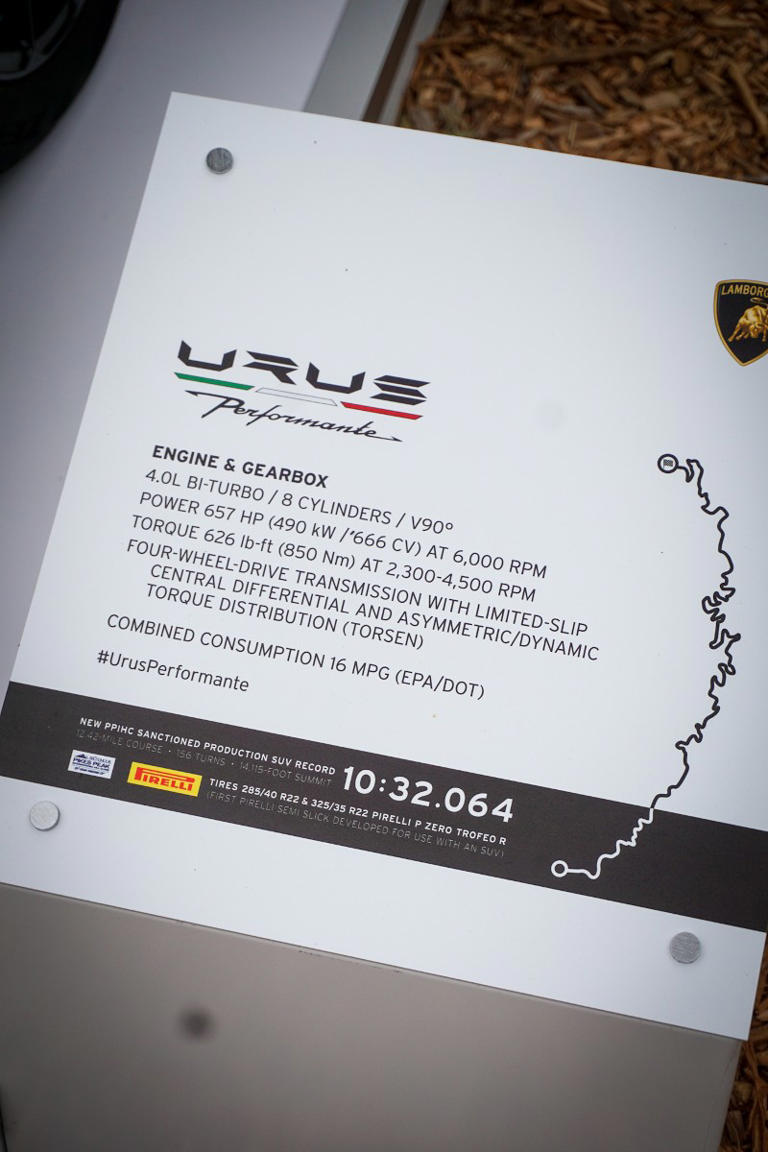
CLP: “If Lamborghini was a cocktail or adult beverage, what would it be?”
MB: “You know, I drink only beer or wine. But, I’d say something very spicy and strong.”
CLP: “How would you describe the typical Lamborghini owner? Who are they?”
MB: “The unexpected.”
CLP: “Is there a certain demographic that your team markets to?”
MB: “I would say, many people would be very positively surprised. The company’s brand image has changed so dramatically. So we have absolutely inspiring customers, especially in the field of big car collectors. They are usually quite young guys. I mean, I’m 48. So I consider myself a little bit young, but I mean, um, about, they are around 40-45. So they have some experience in their life, but they made their own business. They made innovations. Entrepreneurs usually.”
CLP: “Well, that leads me to another question. So SUVs are traditionally synonymous with outdoor off-road adventurers or suburban soccer moms. So now that Lamborghini’s designing an SUV, who is your target market for that?”
MB: “Still a lot of males. It’s the typical guys that maybe have several Aventadors, several super sports cars. And there are a lot who have kids. For example, I drive my Lamborghini with my son to go go-karting, so basically it’s for the “Go-Kart Dad”.
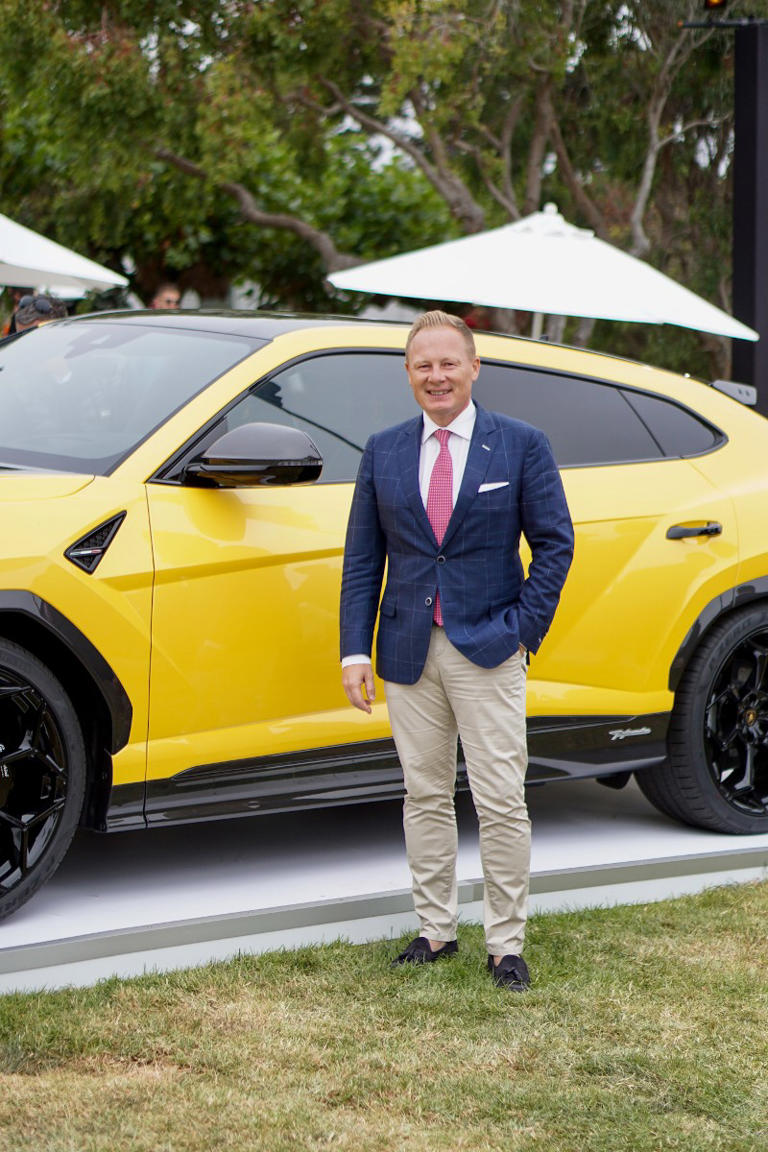
CLP: “What makes the Urus unique and outstanding, especially compared to other luxury cars on the market?”
MB: “It’s the beauty of the design. The car is now four or five years on the market. In the typical places, like Monte-Carlo, you see a lot of them, of course, in Los Angeles and New York, you see them. It’s the best proportion SUV. It looks 100% like Lamborghini. It’s using all of our design DNA and it has a perfect performance. I mean, you can tease a couple of super sports cars with this car. You’re fast on the track with this one. It stands alone. There is no competitor to this car at the moment, at this price point.”
CLP: “When designing a car, what’s your typical process, and how long on average does it take to go from idea to production?”
MB: “Depending on the project, it can be mega fast and we can have the typical development time of a car. We created one within just 11 months. So the customer, the client came before Christmas, and then we presented the car to them by November of the next year. It all has different starting points, depending on what we’re designing.
So, I’d be dreaming about this, this, and this. Then I start sketching. And then we present, get together with the design direction, and then go into production.”
CLP: “Well, it leads me to the next question, have the global supply chain disruptions or shipping delays around the world affected Lamborghini’s production, lead time, cost of manufacturing, or any other factors that go into development?”
MB: “Thank, God, no.”
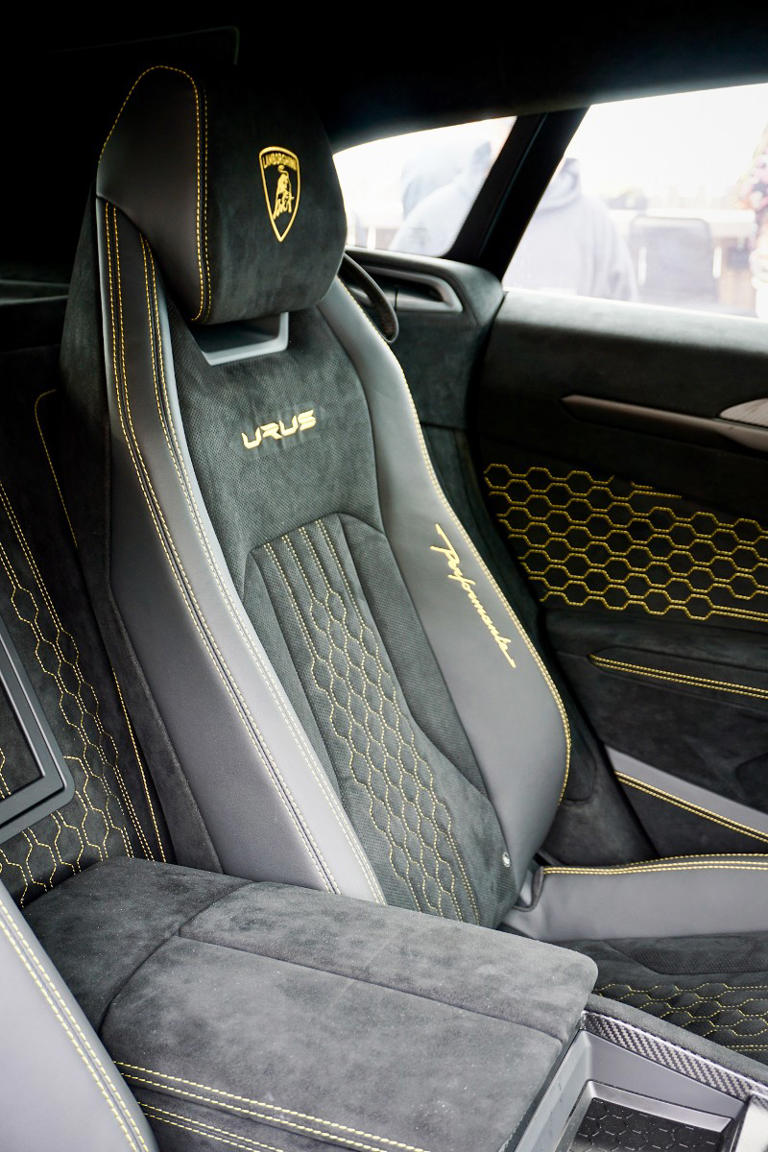
CLP: “What new, innovative, or technological advancements within the cars are you most excited about?”
MB: What I like as a designer is that Lamborghini is a sculpture. Yesterday I spoke with one guy, he said, I’ll put it in my living room and would be perfectly happy. So, I mean, at the end of the day, a Lamborghini for me is already working as a sculpture.
But, we have fantastic sounding engines. We have, you know, goosebump-creating engine sounds for sure. We have fantastic fuel driving the cars on the track. We are about emotional performance, where all these emotions come together. That’s, you know, that’s why also the Urus was successful because it’s not just an SUV. You have the vibration, you have the sound, you have the materials have to touch and feel of a Lamborghini.
You have the design, you have the steering that this mega direct and the agility. So everything is coming together and we are still creating a revolution. So we’re like the saying goes ‘the rebel with a cause’. It’s part of our definition of our brand philosophy.
CLP: “When you think of buying a car, in essence – you’re buying a brand. When designing a new car, how do you maintain a brand’s signature identity while still creating a new and unique silhouette or features that excite your customer base?”
MB: “We want to have the wow effect all the time. I have defined, as a guideline, an easy to understand, but, fascinating to enjoy. It’s like an easy Italian pasta recipe, we have basically two main ingredients – one is the silhouette. When you see a Lamborghini from far away, it’s clear that it’s a Lamborghini. And when you see our cars in front of you and you put them among all the other super sports cars, you see it is a Lamborghini because of this strong vision of the side windows. So these are the two main ingredients in our cars.”
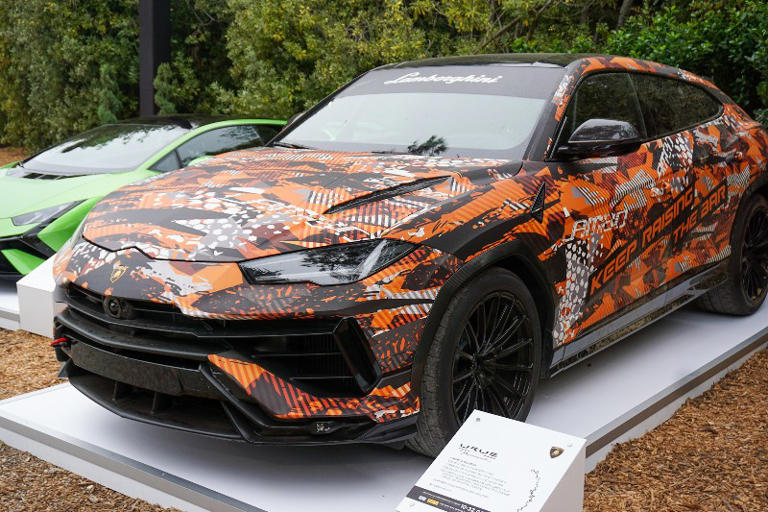
CLP: “Which Lamborghini is your personal favorite and why?”
MB: “For sure then the modern ones.”
CLP: “Where do you envision the brand heading in 5-10 years?”
MB: We have a very clear strategy. Our CEO has talked about it in many interviews, so we have a very clear direction ahead. We will start the hybridization of our model range by 2024, and then we are heading towards electrification. But never losing our design, DNA, or this emotional performance part.”
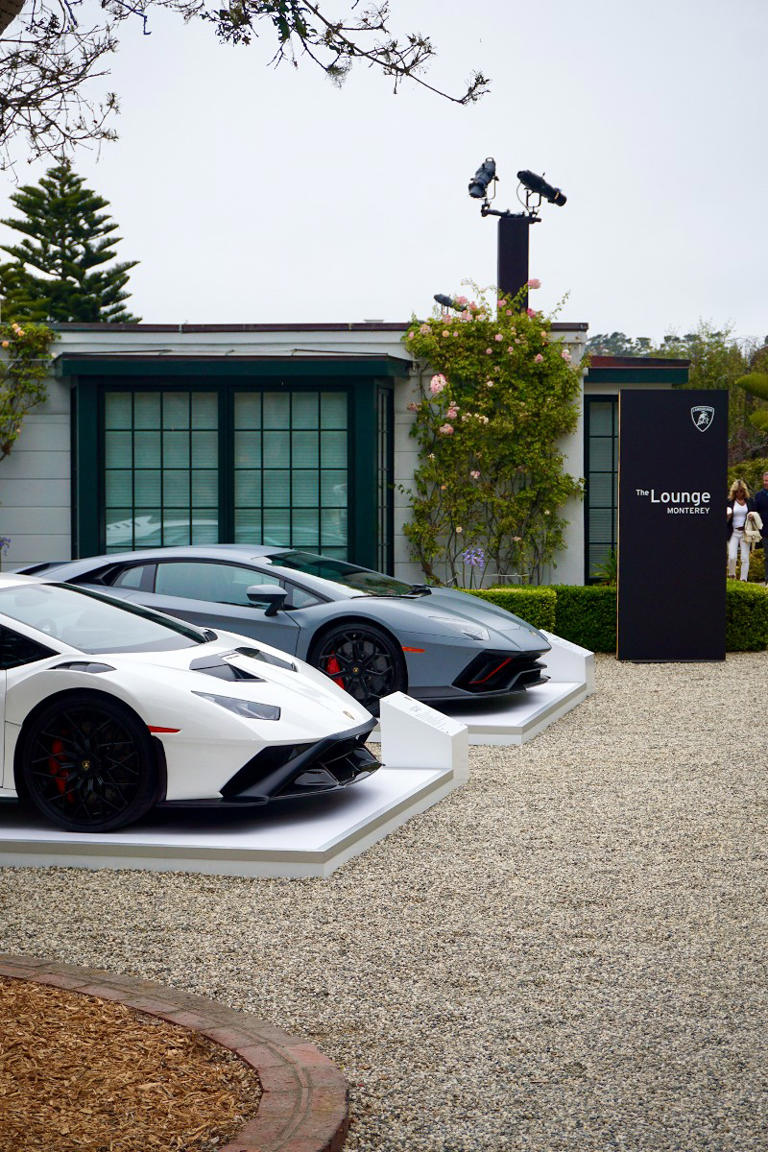
CLP: “I personally love to inspire people, especially younger folks to follow their dreams -because anything is possible in life. So if someone wanted to follow in your footsteps to become a successful car designer, what advice would you give them?”
MB: “Listen to your heart. I was born in East Germany, so I never had any inspiration around me, but I wanted to be a car designer from a young age. I knew that I wanted to create things. So the venue and the path just emerged.”
CLP: “My dad’s a self-made entrepreneur from Brooklyn; you know, the American dream story who ended up here. I was born and raised here (in Pebble Beach). And it’s true. I think what I learned from him is that if you have a dream, just pursue it relentlessly. I think so many people talk themselves out of their dreams because they tell themselves it’s a pipe dream and they don’t believe they can. So they end up going down this linear path that their left brain tells them to, and they never end up being happy. But the people who have the courage to follow their hearts, end up living their dream lives. If it’s in alignment with your destiny, with what you’re meant to do, and it is part of your passion, it will happen.”
MB: “Yeah. That’s why I’m fascinated about our clients because they have exactly those, those biographies. I like guys like Magnus Walker because he is also this guy that, made his dream come. And there was Valentino Rossi, the motorcycle rider, the 9x world champion. And I see him always smiling, knowing that he is pushing his boundaries to the absolute limit, but he never lost the smile. And that’s why he had so many fans. I like these, positive characters that are optimistic.”
CLP: “You have to be in this world. And I think those are the people who end up forging their own way. And again, they’re not afraid of the risk of failure because they know it’s part of the process. That’s how they’re going to learn. And that’s what people actually are inspired by -because it takes fearlessness, and a lot of entrepreneurs are people who forge an illustrious career path or those who do that.”
To learn more about Monterey Car Week, check out behind-the-scenes car week coverage on Inspirations & Celebrations. For an insider’s peek into exclusive car week events and lifestyle content, follow Christina-Lauren Pollack on Instagram, TikTok, and Twitter.

